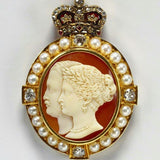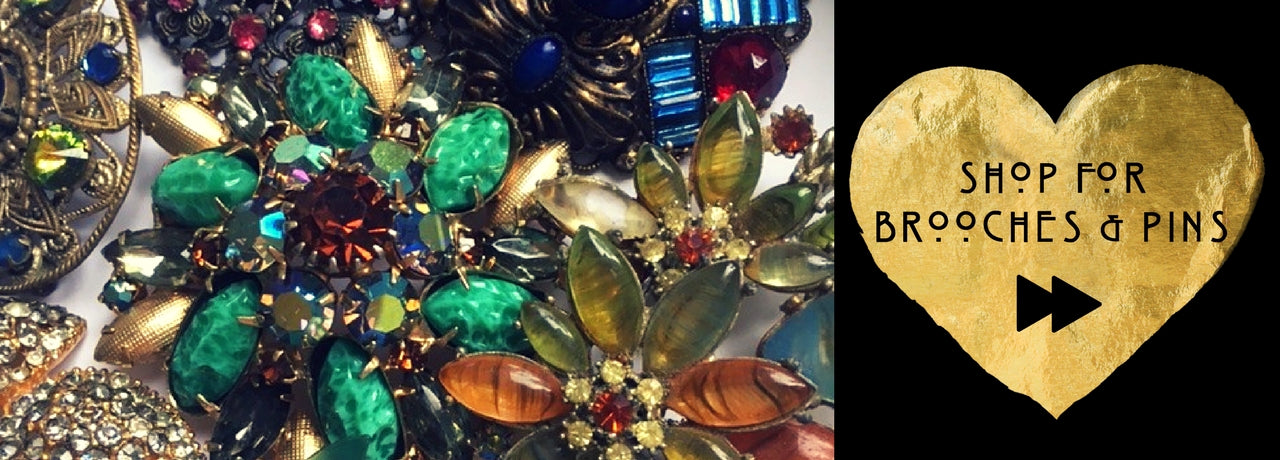 Way back in the time of hunting and gathering to survive, believe it or not brooches were being used as a practical way of keeping pieces of animal skin together. It is believed that at that time, they were made from thorns, smooth pieces of bone, or flint. During the Bronze Age metal ones were used.
Way back in the time of hunting and gathering to survive, believe it or not brooches were being used as a practical way of keeping pieces of animal skin together. It is believed that at that time, they were made from thorns, smooth pieces of bone, or flint. During the Bronze Age metal ones were used.Throughout history brooches have reflected a need whether to be used as a fastener, to commemorate something or someone of importance, to express position, or simply as a decorative adornment. So of all the many jewellery accessories, nothing reflects a time period as readily as the humble brooch.
Nothing could be more poignant that the mourning brooches of the Victorian period which was a period of time beginning with the death of Queen Victoria’s husband Prince Albert. They were very happily married with a large family and it is well documented that his death at an early age devastated the still young Victoria. She plunged not only herself and her court but the whole of Britain into a long period of mourning. Her subjects followed her lead and also conducted themselves as she did, when they lost loved ones.
This brought about a huge industry in the production of mourning jewellery. Whitby in the United Kingdom became the centre for the production of Whitby Jet which started out as fossilised wood, and could be polished to a very high degree for shiny black pieces. The tendency for the mourning jewellery was to leave it with a matt finish whilst the shiny jet was often sold as Victorian jewellery without the tag of reflecting a mourning period.
French Jet is glass and the production of this was perfected during the mid 1800’s in France but then it went on to be produced in other parts of Europe as well. It is cold to the touch and became a cheaper alternative to the genuine jet. It is relatively easy to tell the difference between true jet, and French jet. Jet is hand carved and can sometimes have a brown look (not to be confused with vulcanite which also can give a brown look)
During the late 1800’s the Grand Tour became very popular for those who could afford to do it. It was the “in thing” to visit Venice, Florence, Rome and pick up trinkets along the way. And so a ready market for micro mosaic was born. There are some wonderful brooches around from that time depicting pictorial scenes, flowers, animals etc...native to the places that people were visiting.
Cameos also became popular around this time using a method of carving in relief from a high quality material such as stone, shell, coral, gutta percha, bog oak, ivory, lava or mother of pearl. The later costume jewellery used molded plastic or glass for the cameo brooches.
And then came the turn of the century...out of the 1800’s and into the 1900’s and that was the beginning of a whole new era for brooches. I will leave the ongoing brooch story till another day ...

